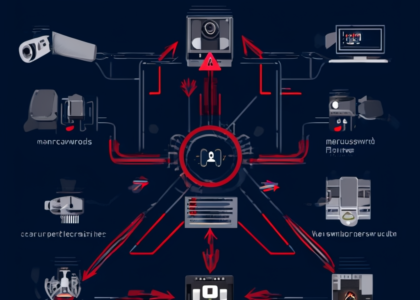Simple Steps to Protect Your Personal Data from Hackers
Introduction
In today’s digital world, your personal data is more valuable than ever. Hackers constantly look for ways to steal sensitive information, leading to identity theft, financial loss, and privacy breaches. But don’t worry! Protecting your data doesn’t require technical expertise. Here are some simple yet effective steps to keep your personal information safe from cyber threats.
1. Use Strong and Unique Passwords
One of the easiest ways hackers gain access to accounts is through weak passwords. Follow these tips:
- Use a mix of uppercase, lowercase, numbers, and symbols.
- Avoid common passwords like “123456” or “password.”
- Create a unique password for each account.
- Consider using a password manager to store and generate secure passwords.
2. Enable Two-Factor Authentication (2FA)
Two-Factor Authentication adds an extra layer of security. Even if hackers steal your password, they can’t access your account without the second verification step, such as:
- OTP (One-Time Password) via SMS or email.
- Authentication apps like Google Authenticator.
- Biometric verification (fingerprint or face recognition).
3. Beware of Phishing Attacks
Phishing scams trick users into providing personal information. To stay safe:
- Never click on suspicious links in emails or messages.
- Verify the sender before providing any details.
- Look for spelling mistakes and unusual email addresses.
- Use an email spam filter to block phishing emails.
4. Keep Your Software and Devices Updated
Outdated software is a common target for hackers. Protect yourself by:
- Regularly updating your operating system, apps, and antivirus software.
- Enabling automatic updates for important security patches.
- Avoiding pirated software, as it may contain malware.
5. Use a Secure Internet Connection
Public Wi-Fi networks are easy targets for hackers. To browse safely:
- Avoid using public Wi-Fi for sensitive transactions like banking.
- Use a VPN (Virtual Private Network) to encrypt your connection.
- Connect only to password-protected and trusted networks.
6. Monitor Your Online Accounts
Hackers often access data without immediate signs. Stay ahead by:
- Checking account activity and transaction history regularly.
- Setting up alerts for unauthorized logins or transactions.
- Using services like Have I Been Pwned to check if your data has been leaked.
7. Be Careful with Social Media Sharing
Hackers gather information from social media for targeted attacks. To reduce risks:
- Avoid sharing personal details like your address, phone number, or vacation plans.
- Set your profiles to private to limit access to unknown people.
- Be cautious of friend requests from strangers.
Conclusion
Cybersecurity is all about being proactive. By following these simple steps, you can protect your personal data from hackers and stay safe online. Remember, security starts with you!
🔒 Stay safe, stay secure!



